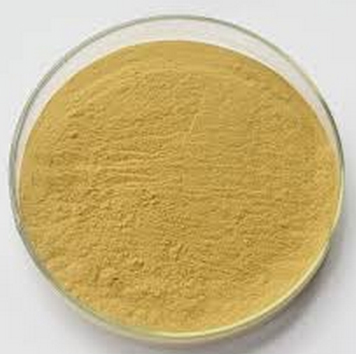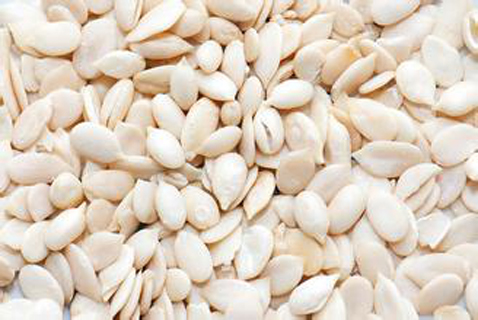Factory Wholesale PriceList for Pumpkin Seed Extract in Romania
Factory Wholesale PriceList for Pumpkin Seed Extract in Romania Detail:
[Latin Name] Cucurbita pepo
[Plant Source]from China
[Specifications] 10:1 20:1
[Appearance] Brown yellow fine powder
Plant Part Used:Seed
[Particle size] 80 Mesh
[Loss on drying] ≤5.0%
[Heavy Metal] ≤10PPM
[Storage] Store in cool & dry area, keep away from the direct light and heat.
[Shelf life] 24 Months
[Package] Packed in paper-drums and two plastic-bags inside.
[Net weight] 25kgs/drum
Introduction
Pumpkin seed is used medicinally to help improve bowel function by ridding the intestinal tract of parasites and worms.
As raw material of drugs for eliminating insecticide, swelling, andpertussis, pumpkin seed extract is widely used in pharmaceutical industry;
As product of treating malnutrition and prostate, pumpkin seed extract is widely used in health industry.
FUNCTION:
1.Pumpkin seed extract can help to prevent the prostate disease.
2.Pumpkin seed extract has the function of treating whooping cough and children with sorethroat.
3.Pumpkin is also a natural source of magnesium, phosphorus, selenium, zinc, vitamin A, and vitamin C.
4.The cushaw extract is also a laxative, which can help to moisture the skin, is indeed a good beauty food for women.
5.Pumpkin seed is used medicinally to help improve bowel function by ridding the intestinal tract of parasites and worms.
6.The cushaw seed extract have much acid , this acid can relax the rest angina, and have a function to low the high blood liquid
Product detail pictures:

Related Product Guide:
With responsible good quality method, good status and excellent client services, the series of solutions produced by our company are exported to lots of countries and regions for Factory Wholesale PriceList for Pumpkin Seed Extract in Romania , The product will supply to all over the world, such as: Orlando, Croatia, Austria, We have been in operation for more than 10 years. We are dedicated to quality products and consumer support. We currently own 27 product utility and design patents. We invite you to visit our company for a personalized tour and advanced business guidance.
This video shows you how to pronounce Hypericin
Professor Maureen McCann, Director of the Energy Center at Purdue University, addresses “A Roadmap for Selective Deconstruction of Lignocellulosic Biomass to Advanced Biofuels and Useful Co-Products” on February 11, 2013 as part of the Andlinger Center’s 2012-2013 Highlight Seminar Series.
ABSTRACT
Second-generation biofuels will be derived from lignocellulosic biomass using biological catalysis to use the carbon in plant cell wall polysaccharides for ethanol or other biofuels. However, this scenario is both carbon- and energy-inefficient. The major components of biomass are cellulose, hemicellulose and lignin. Biological conversion routes utilize only the polysaccharide moiety of the wall, and the presence of lignin interferes with the access of hydrolytic enzymes to the polysaccharides. Living micro-organisms, required to ferment released sugars to biofuels, utilize some sugars in their own growth and co-produce carbon dioxide. In contrast, chemical catalysis has the potential to transform biomass components directly to alkanes, aromatics, and other useful molecules with improved efficiencies. The Center for Direct Catalytic Conversion of Biomass to Biofuels (C3Bio) is a DOE-funded Energy Frontier Research Center, comprising an interdisciplinary team of plant biologists, chemists and chemical engineers. We are developing catalytic processes to enable the extraction, fractionation, and depolymerization of cellulose and hemicellulose coupled to catalytic transformation of hexoses and pentoses into hydrocarbons. Additional catalysts may cleave the ether bonds of lignin to release useful aromatic co-products or that may oxidize lignols to quinones. In a parallel approach, fast-hydropyrolysis is a relatively simple and scalable thermal conversion process. Our understanding of biomass-catalyst interactions require novel imaging and analysis platforms, such as mass spectrometry to analyze potentially complex mixtures of reaction products and transmission electron tomography to image the effects of applying catalysts to biomass and to provide data for computational modeling. By integrating biology, chemistry and chemical engineering, our data indicate how we might modify cell wall composition, or incorporate Trojan horse catalysts, to tailor biomass for physical and chemical conversion processes. We envision a road forward for directed construction and selective deconstruction of plant biomass feedstock.
BIOGRAPHY
Maureen McCann is the Director of Purdue’s Energy Center, part of the Global Sustainability Initiative in Discovery Park. She obtained her undergraduate degree in Natural Sciences from the University of Cambridge, UK, in 1987, and then a PhD in Botany at the John Innes Centre, Norwich UK, a government-funded research institute for plant and microbial sciences. She stayed at the John Innes Centre for a post-doctoral, partly funded by Unilever, and then as a project leader with her own group from 1995, funded by The Royal Society. In January 2003, she moved to Purdue University as an Associate Professor, and she is currently a Professor in the Department of Biological Sciences.
The goal of her research is to understand how the molecular machinery of the plant cell wall contributes to cell growth and specialization, and thus to the final stature and form of plants. Plant cell walls are the source of lignocellulosic biomass, an untapped and sustainable resource for biofuels production with the potential to reduce oil dependence, improve national security, and boost rural economies. She is also the Director of the Center for Direct Catalytic Conversion of Biomass to Biofuels (C3Bio), an interdisciplinary team of biologists, chemists and chemical engineers in an Energy Frontier Research Center funded by the US Department of Energy’s Office of Science.
We are long-term partners, there is no disappointment every time, we hope to maintain this friendship later!







